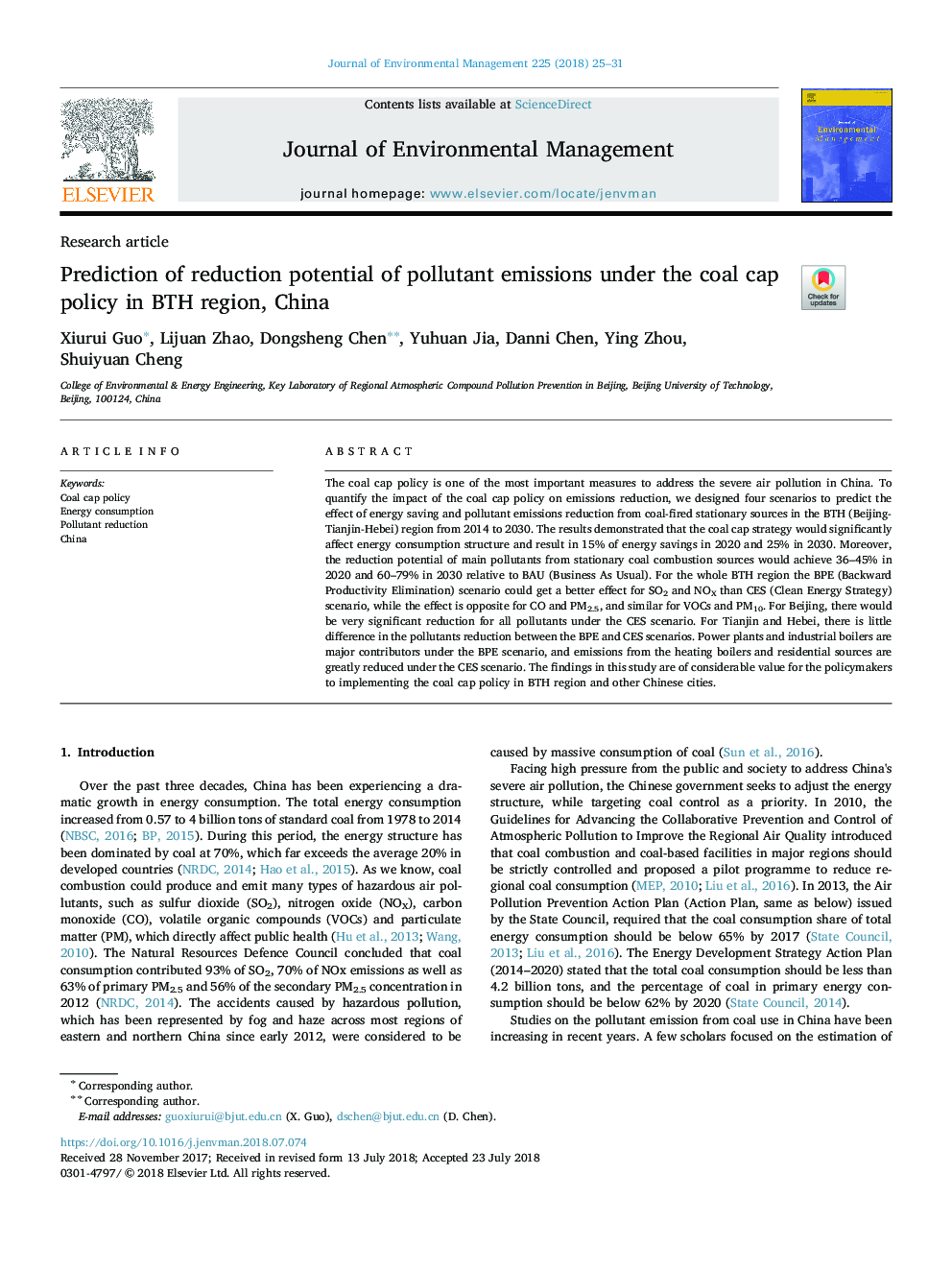| Article ID | Journal | Published Year | Pages | File Type |
|---|---|---|---|---|
| 7475440 | Journal of Environmental Management | 2018 | 7 Pages |
Abstract
The coal cap policy is one of the most important measures to address the severe air pollution in China. To quantify the impact of the coal cap policy on emissions reduction, we designed four scenarios to predict the effect of energy saving and pollutant emissions reduction from coal-fired stationary sources in the BTH (Beijing-Tianjin-Hebei) region from 2014 to 2030. The results demonstrated that the coal cap strategy would significantly affect energy consumption structure and result in 15% of energy savings in 2020 and 25% in 2030. Moreover, the reduction potential of main pollutants from stationary coal combustion sources would achieve 36-45% in 2020 and 60-79% in 2030 relative to BAU (Business As Usual). For the whole BTH region the BPE (Backward Productivity Elimination) scenario could get a better effect for SO2 and NOX than CES (Clean Energy Strategy) scenario, while the effect is opposite for CO and PM2.5, and similar for VOCs and PM10. For Beijing, there would be very significant reduction for all pollutants under the CES scenario. For Tianjin and Hebei, there is little difference in the pollutants reduction between the BPE and CES scenarios. Power plants and industrial boilers are major contributors under the BPE scenario, and emissions from the heating boilers and residential sources are greatly reduced under the CES scenario. The findings in this study are of considerable value for the policymakers to implementing the coal cap policy in BTH region and other Chinese cities.
Keywords
Related Topics
Physical Sciences and Engineering
Energy
Renewable Energy, Sustainability and the Environment
Authors
Xiurui Guo, Lijuan Zhao, Dongsheng Chen, Yuhuan Jia, Danni Chen, Ying Zhou, Shuiyuan Cheng,
